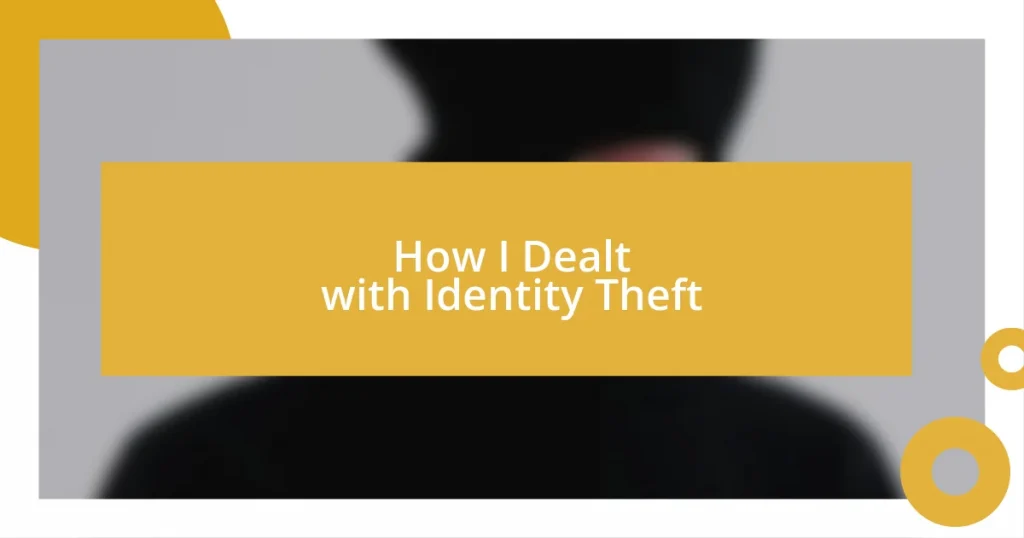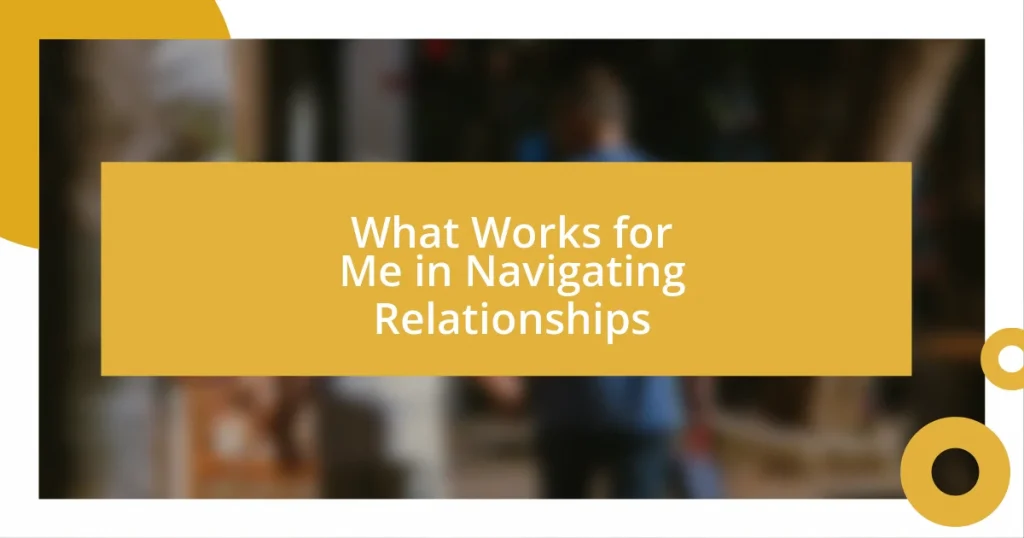Key takeaways:
- Identity theft is a serious emotional violation, highlighting the need for vigilance and awareness in protecting personal information.
- Immediate actions include contacting financial institutions, filing an FTC report, and placing a fraud alert on credit reports to mitigate potential damage.
- Long-term strategies for protection involve regularly monitoring credit, using strong passwords with two-factor authentication, and seeking help from resources like the Identity Theft Resource Center and the FTC.
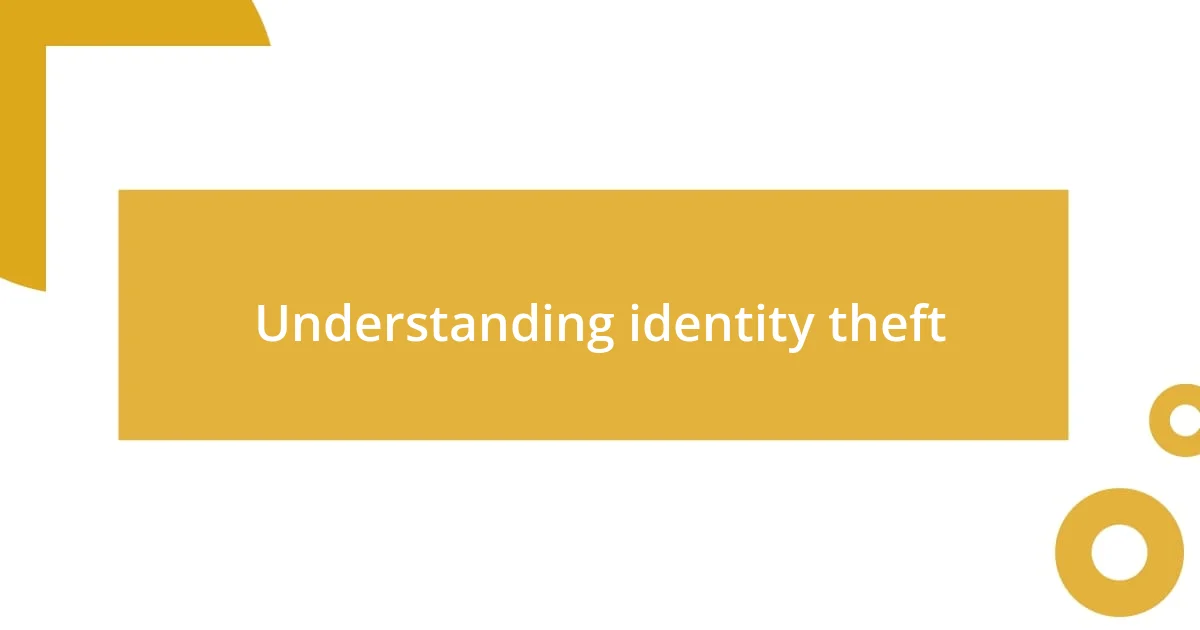
Understanding identity theft
Identity theft is more than just a financial crime; it’s a violation of trust and can leave deep emotional scars. I realized this when I found out someone had used my personal information to open credit accounts in my name. It felt as if someone had invaded my personal space, leaving me feeling vulnerable and anxious about who I could trust.
It’s astonishing how easily someone can use your information to impersonate you. I remember the first time I received a credit card statement for an account I had never opened. My heart raced as I questioned, “How could this happen to me?” It wasn’t just about the money; it was the dread of knowing that my identity was no longer solely mine.
When we think about identity theft, we often picture hackers lurking in dark corners of the internet, but it can happen in the most mundane ways. One day, a simple mistake at a bank—where a teller inadvertently shared my information—led to a spiral of complications. This experience highlighted how crucial it is to stay vigilant about our personal information and to understand that identity theft impacts not just finances, but our entire sense of self.
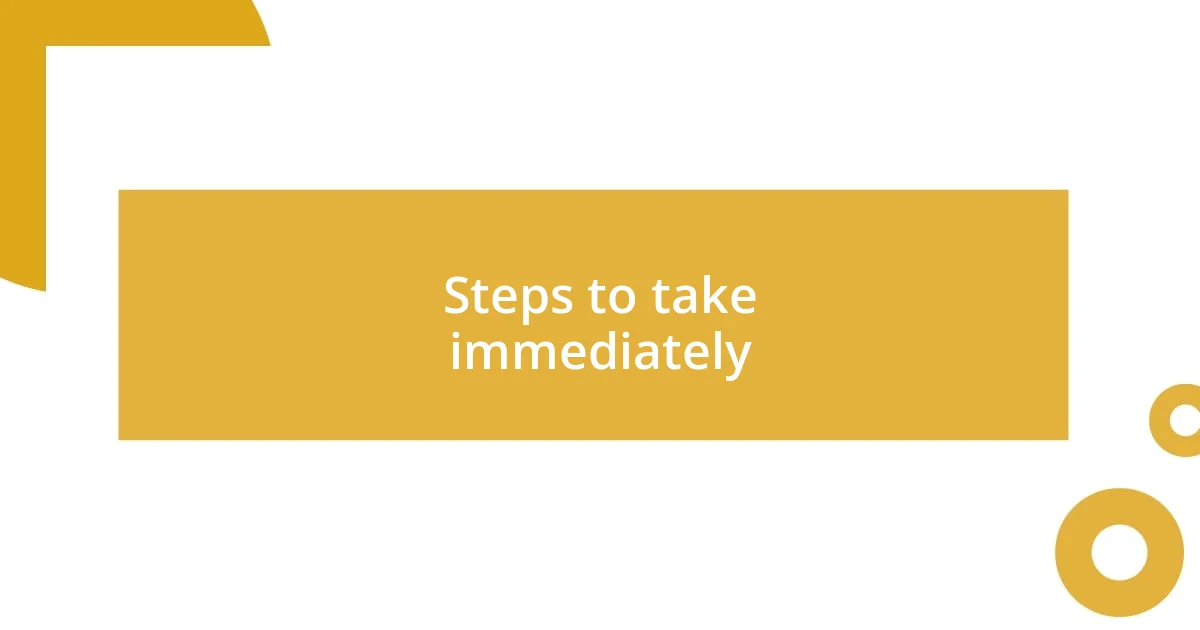
Steps to take immediately
When I first discovered that my identity had been stolen, my immediate reaction was sheer panic. The first thing I did was to contact my financial institutions. I can’t stress how important this step is; alerting your bank and credit card companies can help prevent further unauthorized transactions. They often have dedicated teams to guide you through the process and secure your accounts.
Next, I filed a report with the Federal Trade Commission (FTC). The process was straightforward, but still felt daunting at the moment. This report served as an official record of the theft and helped me create a recovery plan. It’s not just about reporting, but having the documentation that you need if the situation escalates serves as a significant backing for your claims.
Finally, consider placing a fraud alert on your credit report. This one step can make a world of difference. When I did this, I found a sense of relief—it meant that creditors had to take extra steps to verify my identity before approving new accounts. I learned that it’s essential to take these steps quickly; the sooner you act, the better the chances of minimizing the damage.
| Step | Description |
|---|---|
| Contact Financial Institutions | Immediately alert banks and credit card companies about unauthorized transactions. |
| File an FTC Report | Officially document the theft and create a recovery plan. |
| Place a Fraud Alert | Notify credit bureaus to require additional verification for new accounts. |
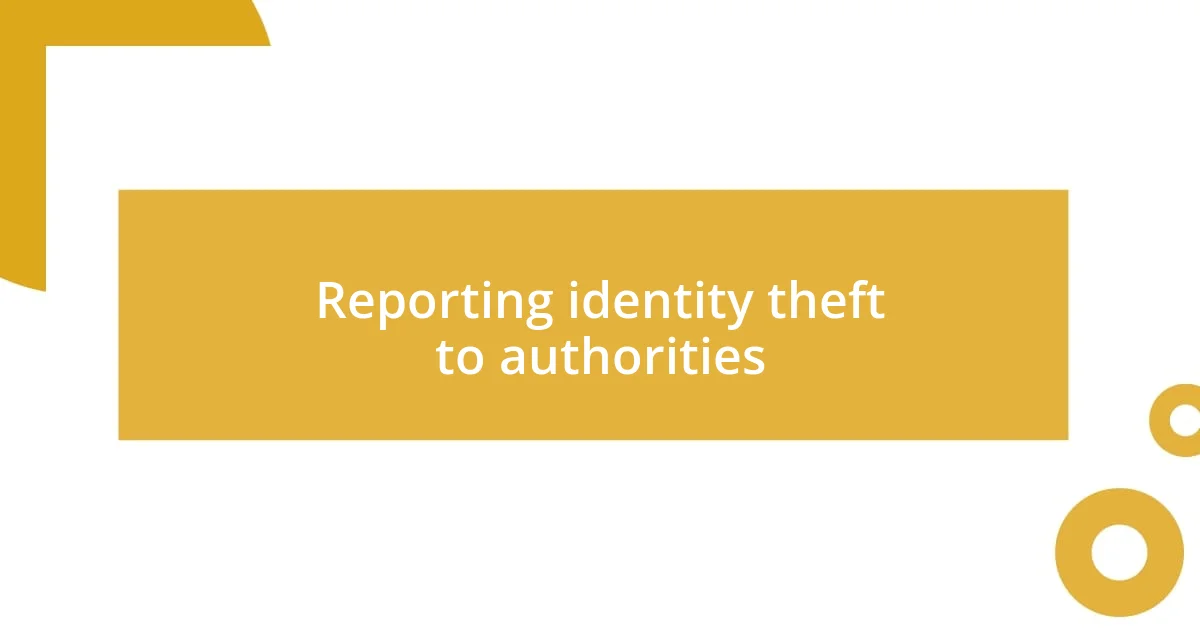
Reporting identity theft to authorities
Once I reported the identity theft to the authorities, a weight began to lift off my shoulders. I made sure to file a police report, which added another layer of legitimacy to my situation. This document wasn’t just paperwork; it felt like a first step towards reclaiming my life. When speaking with the officer, I could sense their understanding of the gravity of the situation, which made me feel less alone in this fight.
Here’s a checklist of what I found helpful when reporting identity theft:
- File a Police Report: Approach your local police station to document the theft. This is crucial for disputing fraudulent charges.
- Contact the Credit Bureaus: Reach out to Experian, TransUnion, and Equifax to report the theft and request added security measures.
- Notify the FTC: Use the FTC’s Identity Theft Complaint form online. This report can serve as a foundation for your recovery plan.
- Alert the Social Security Administration (SSA): If your SSN has been compromised, inform them to prevent misuse.
Taking these steps felt like taking control again, even amidst the chaos. I realized that while the experience was jarring, having a plan and knowing my rights gave me a sense of empowerment.
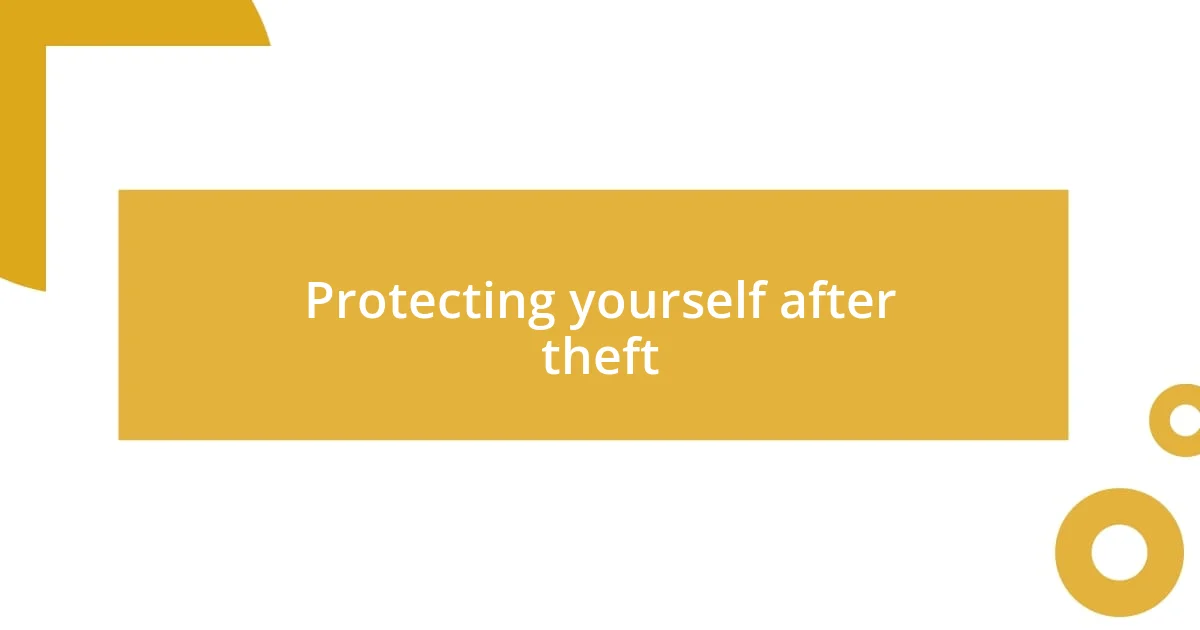
Protecting yourself after theft
Once the dust of panic settled, I turned my focus to long-term protection measures. One of the crucial steps I took was to regularly monitor my credit report. There’s something oddly comforting in seeing that everything is where it should be, isn’t there? It’s an easy task; I found that checking my report at least three times a year was the perfect way to keep my mind at ease, and it also helped me catch any discrepancies before they spiraled into bigger issues.
In addition, I enrolled in an identity theft protection service. The peace of mind I gained from having professionals constantly scanning for unusual activity cannot be overstated. It felt like having a safety net; they would notify me of any attempts to open accounts in my name, which spared me from a lot of sleepless nights worrying about what might happen next. Have you ever thought about how much easier it is to sleep when you know someone has your back?
Lastly, I made it a habit to shred any documents containing personal information. You might think this step is a minor detail, but I can’t stress enough how significant it is. It became a small ritual for me, emphasizing the importance of protecting my sensitive data—not just after the theft, but as a lifestyle change moving forward. It helped reinforce my commitment to safeguarding my identity and made me feel more proactive in addressing the reality of identity theft.
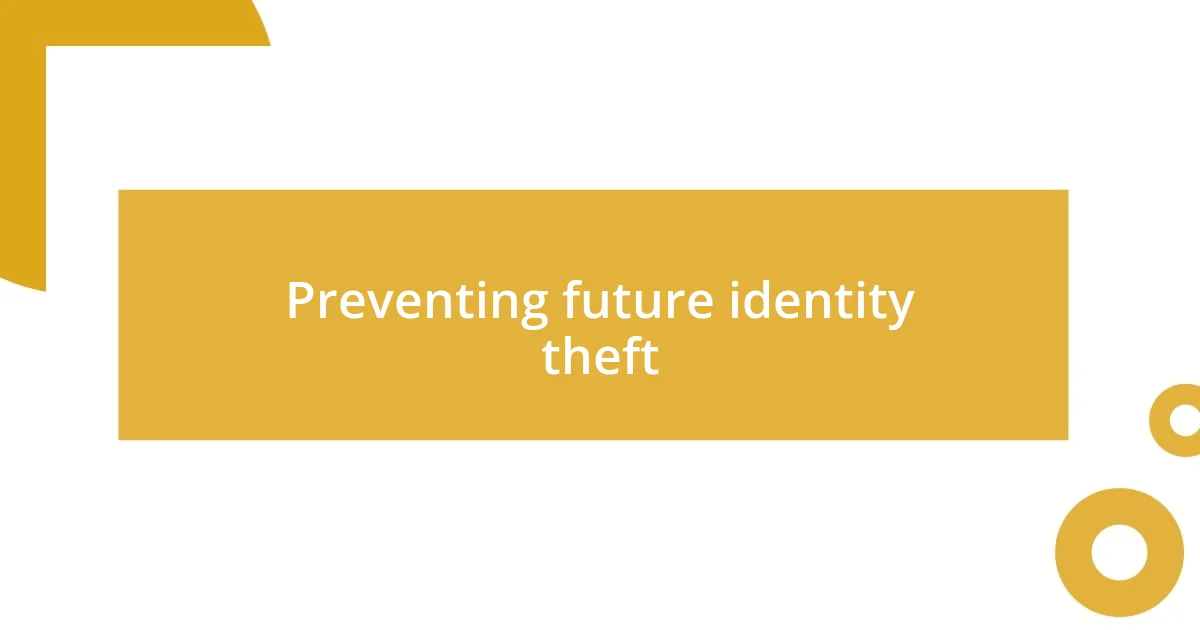
Preventing future identity theft
A crucial part of preventing future identity theft involves staying informed about your personal data. I made it a point to regularly update my passwords, using a mix of upper and lower-case letters, numbers, and symbols—this simple practice greatly reduced the chances of unauthorized access. Have you ever wondered how strong your passwords really are? I realized that relying on easy-to-remember passwords was a gamble I simply couldn’t take anymore.
Another effective measure I adopted was enabling two-factor authentication on important accounts. This extra layer of security has made me feel significantly more secure. It’s comforting to know that even if someone were to get hold of my password, they would still need a second piece of information to access my accounts. I remember the first time I logged in with two-factor authentication; I felt a rush of relief knowing that I’d taken an additional step to safeguard my information.
Moreover, I learned how vital it is to be cautious with the information I share online. This meant being selective about the personal details I posted on social media platforms—even seemingly harmless snippets can be goldmines for identity thieves. I often ask myself, “Is this information worth the risk?” Since changing my approach online, I’ve felt more empowered and in control of my narrative, making it harder for anyone with ill intentions to piece my life together.
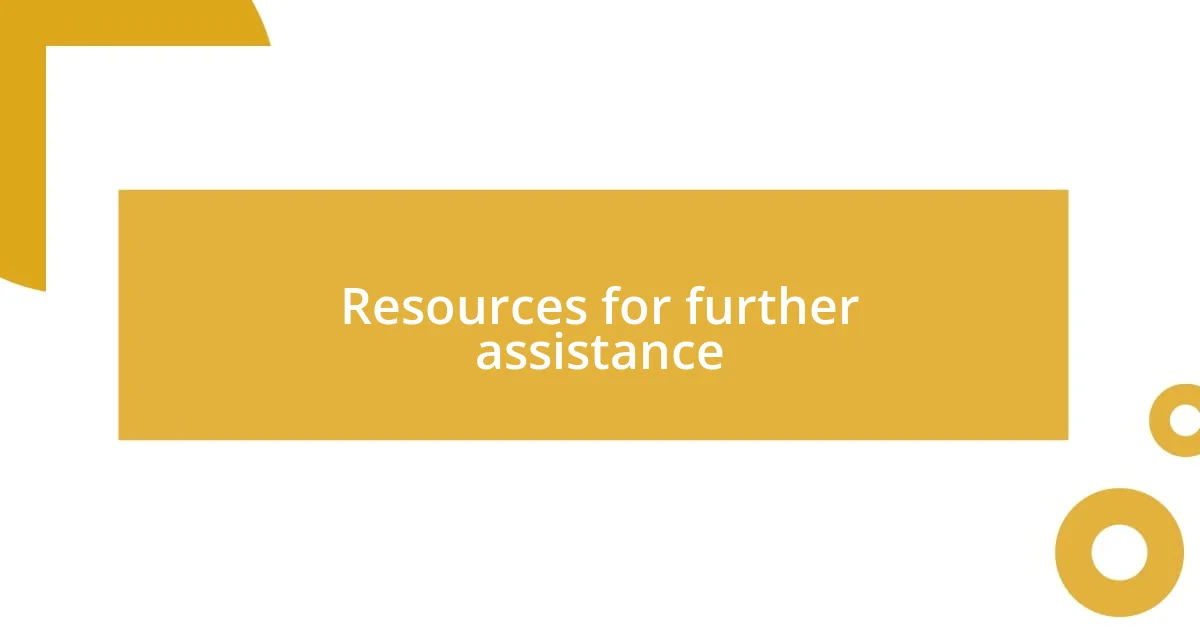
Resources for further assistance
When I was navigating the aftermath of identity theft, I discovered that seeking professional help was invaluable. I reached out to the Identity Theft Resource Center, a nonprofit that offers free support and guidance. Their compassionate team walked me through the steps I needed to take, and it felt like talking to a friend who truly understood my situation. Have you ever had that moment where you feel someone just gets what you’re going through?
Additionally, the Federal Trade Commission (FTC) provides a wealth of resources specifically designed for those affected by identity theft. I remember spending hours on their website, soaking up all the information on how to report theft and what to do next. It was reassuring to find a government agency dedicated to protecting consumers, and the step-by-step recovery plans they outlined made the daunting process much less overwhelming.
Lastly, I found forums and support groups online where I could connect with others who shared similar experiences. It’s remarkable how valuable it was to hear stories from people who had faced identity theft and reclaimed their lives. I often left those conversations feeling lighter and more empowered. Have you considered how it feels to share your burdens with others who truly understand? There’s strength in community, and it helped me recognize that I wasn’t alone in my journey.









